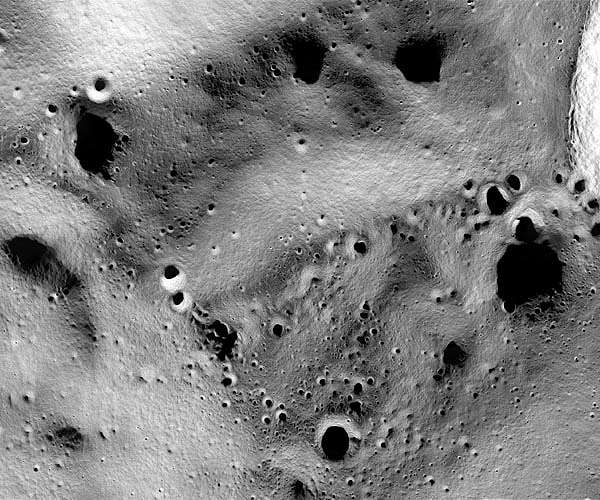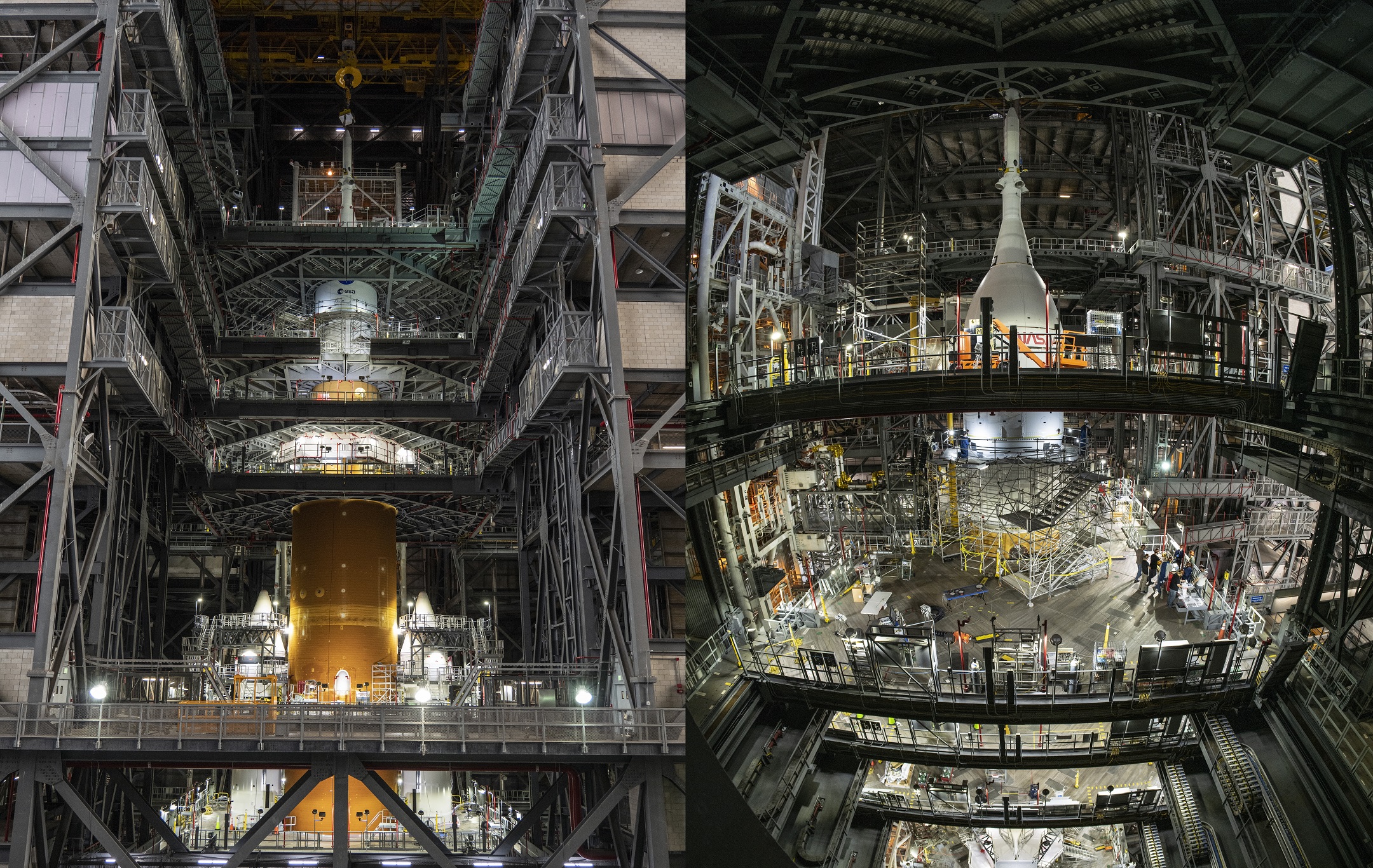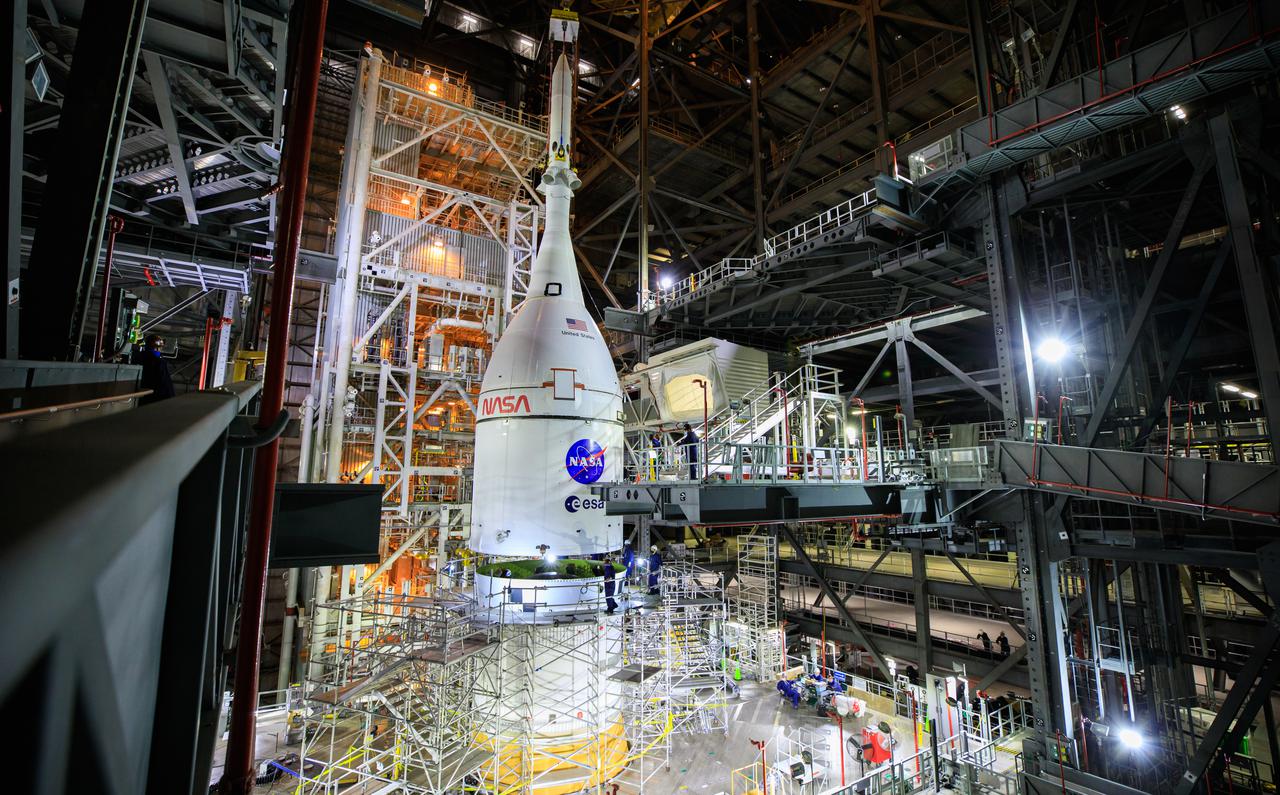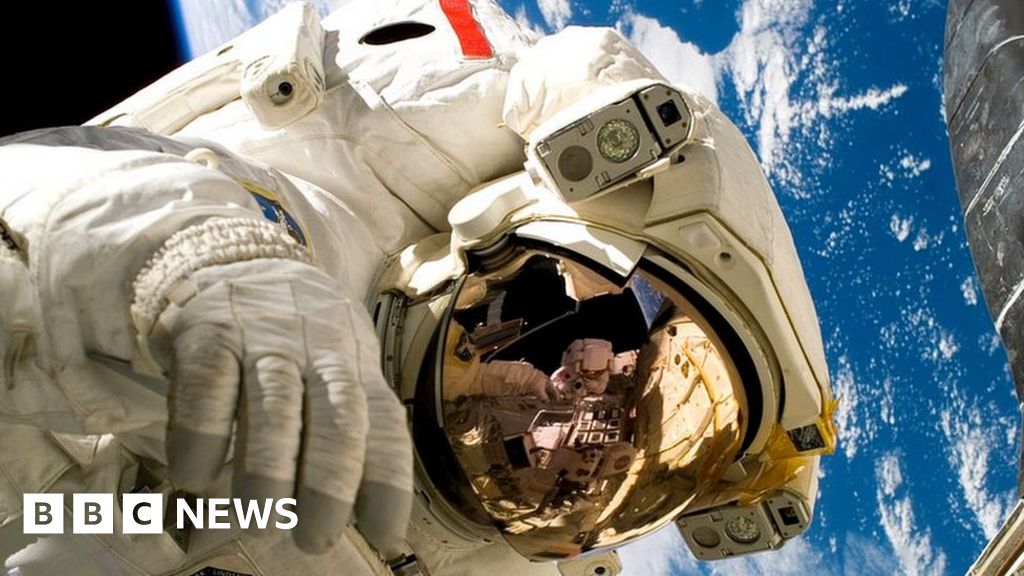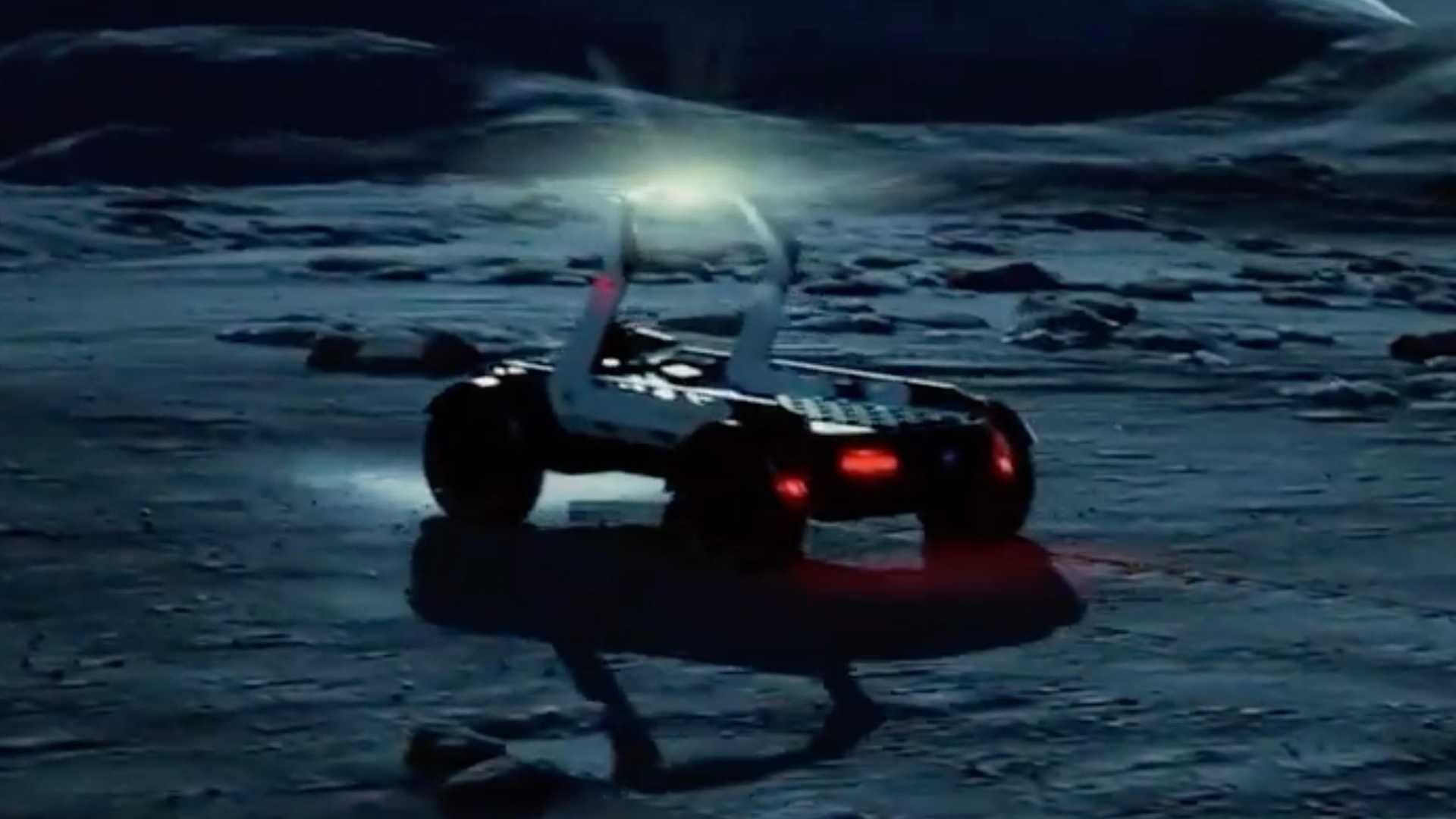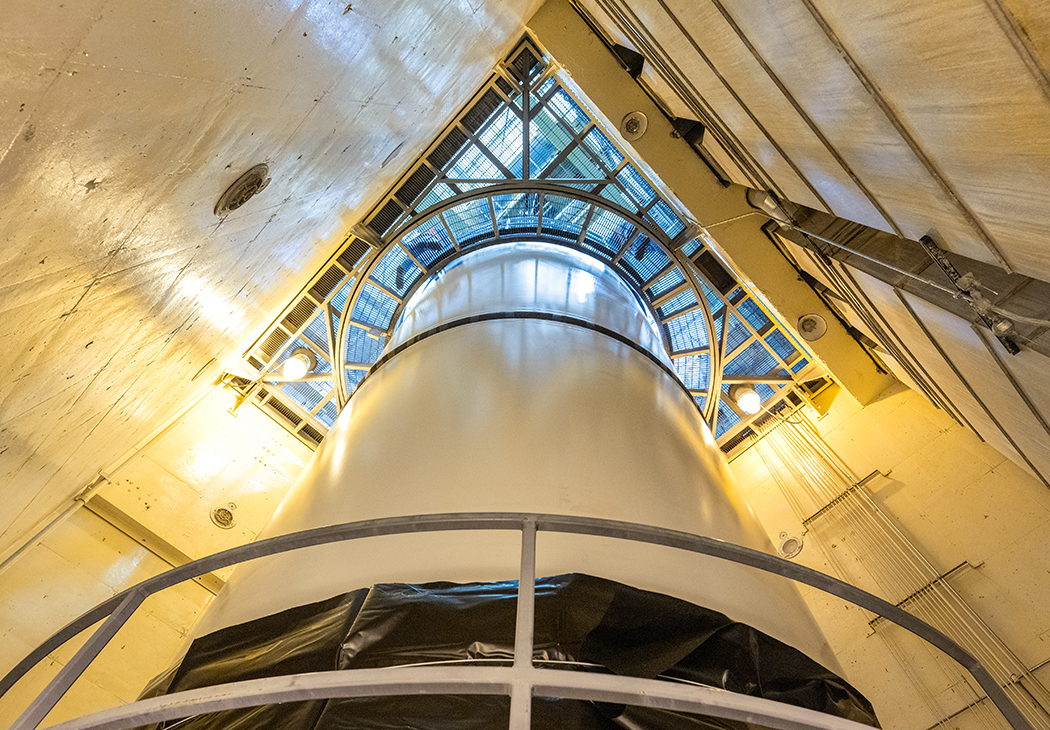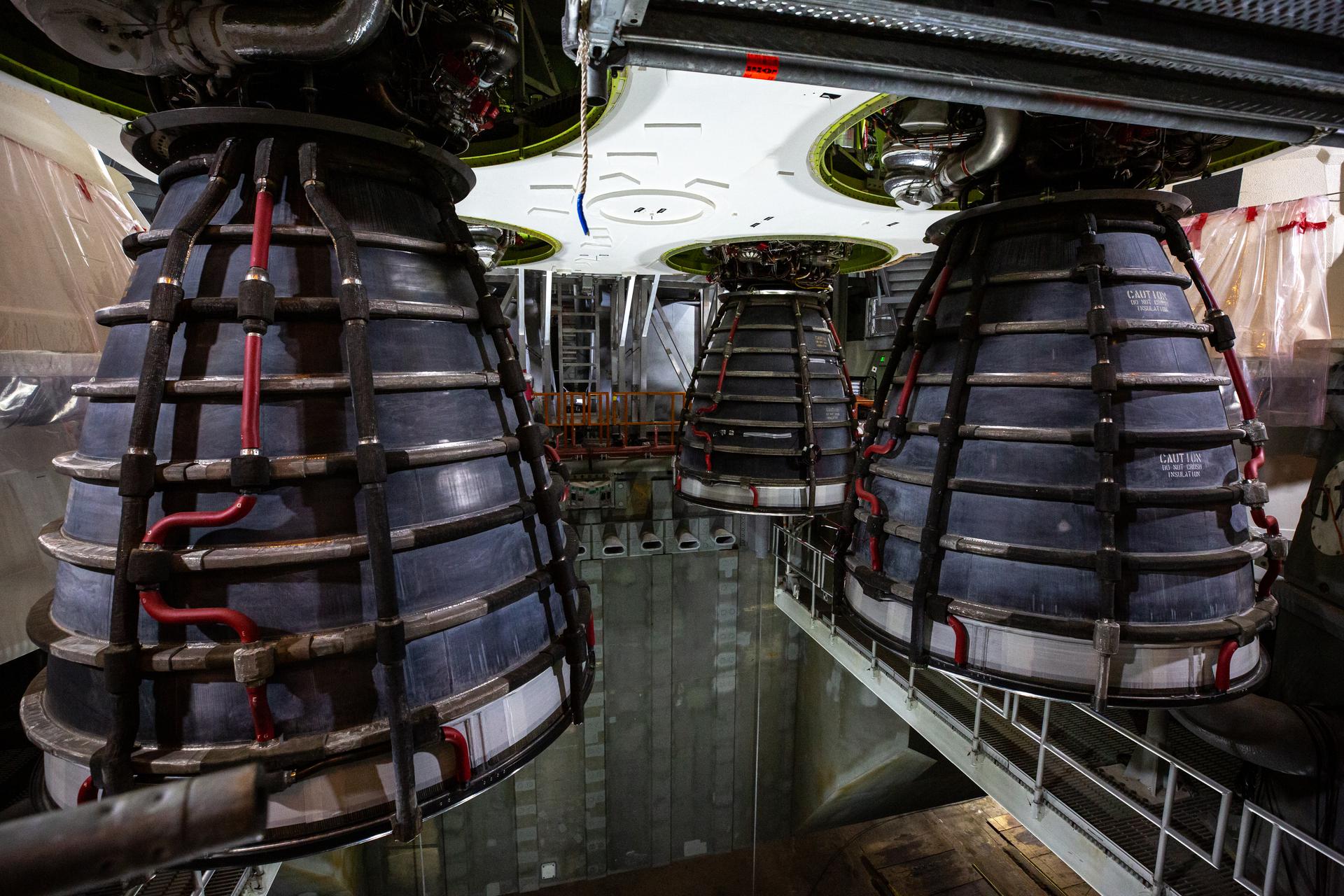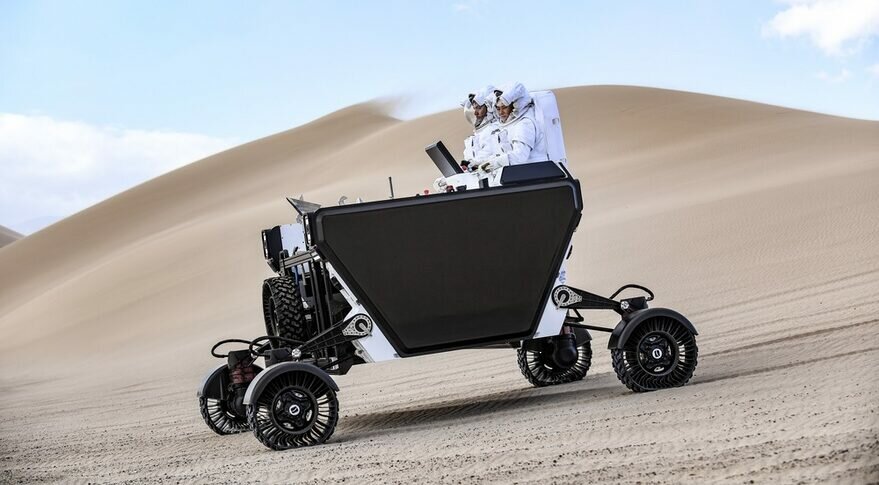Media registration is now open to capture imagery and video as NASA’s Space Launch System (SLS) rocket and Orion spacecraft roll out of the Vehicle Assembly Building (VAB) at the agency’s Kennedy Space Center in Florida this winter for the first time. SLS and Orion will journey to Launch Pad 39B atop the crawler transporter-2 for a test in preparation for the agency’s Artemis I mission.
The exact date for the move is currently under review. Additional information on timing, as well as interview opportunities and NASA coverage for the final prelaunch test, known as a wet dress rehearsal, will be provided later. No onsite media support is planned during the test itself at this time.
During the rollout, media will have the opportunity to follow the journey from the iconic VAB to the pad from multiple locations. Experts from NASA and its partners will be available to answer questions during the beginning and end of rollout operations.
During the test, planned approximately a week after arriving at the pad, teams from Kennedy’s Exploration Ground Systems, as well as the primary contractor, Jacobs, will load the rocket with more than 700,000 gallons of cryogenic, or supercold, propellants and the team will run through the launch countdown sequence, ending prior to engine ignition. Engineers also will demonstrate procedures to drain the propellants from the rocket. After the test, the rocket and spacecraft will return to the VAB for final checkouts before launch.
Accreditation for this activity is open to U.S. and international media. International media must apply by Sunday, Nov. 28. U.S. media must apply by Wednesday, Dec. 8.
Media registration is now open to capture imagery and video as NASA’s Space Launch System (SLS) rocket and Orion spacecraft roll out of the Vehicle Assembly

www.nasa.gov

www.cnbc.com
View: https://www.youtube.com/watch?v=z4uivPpzCGo

